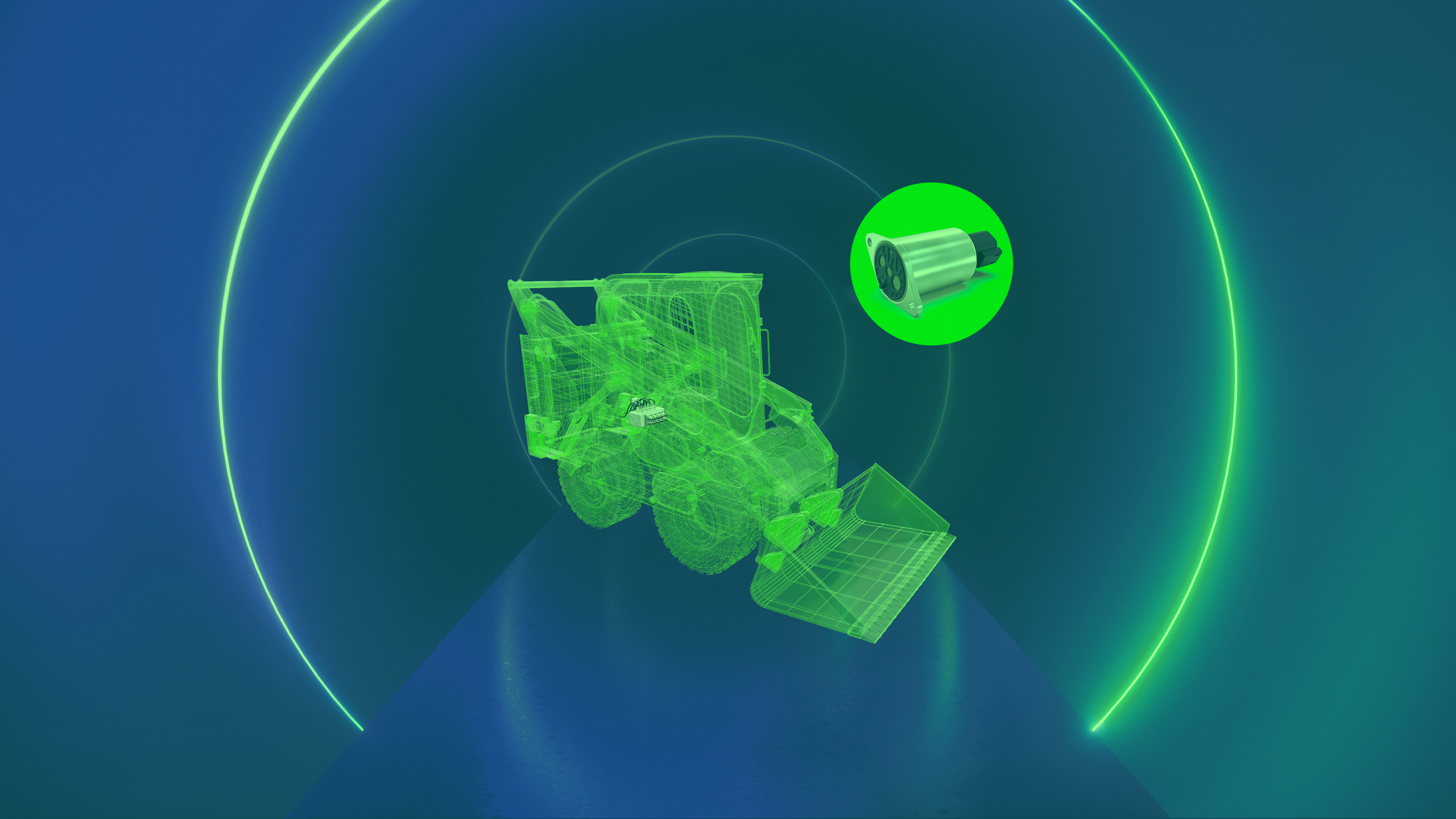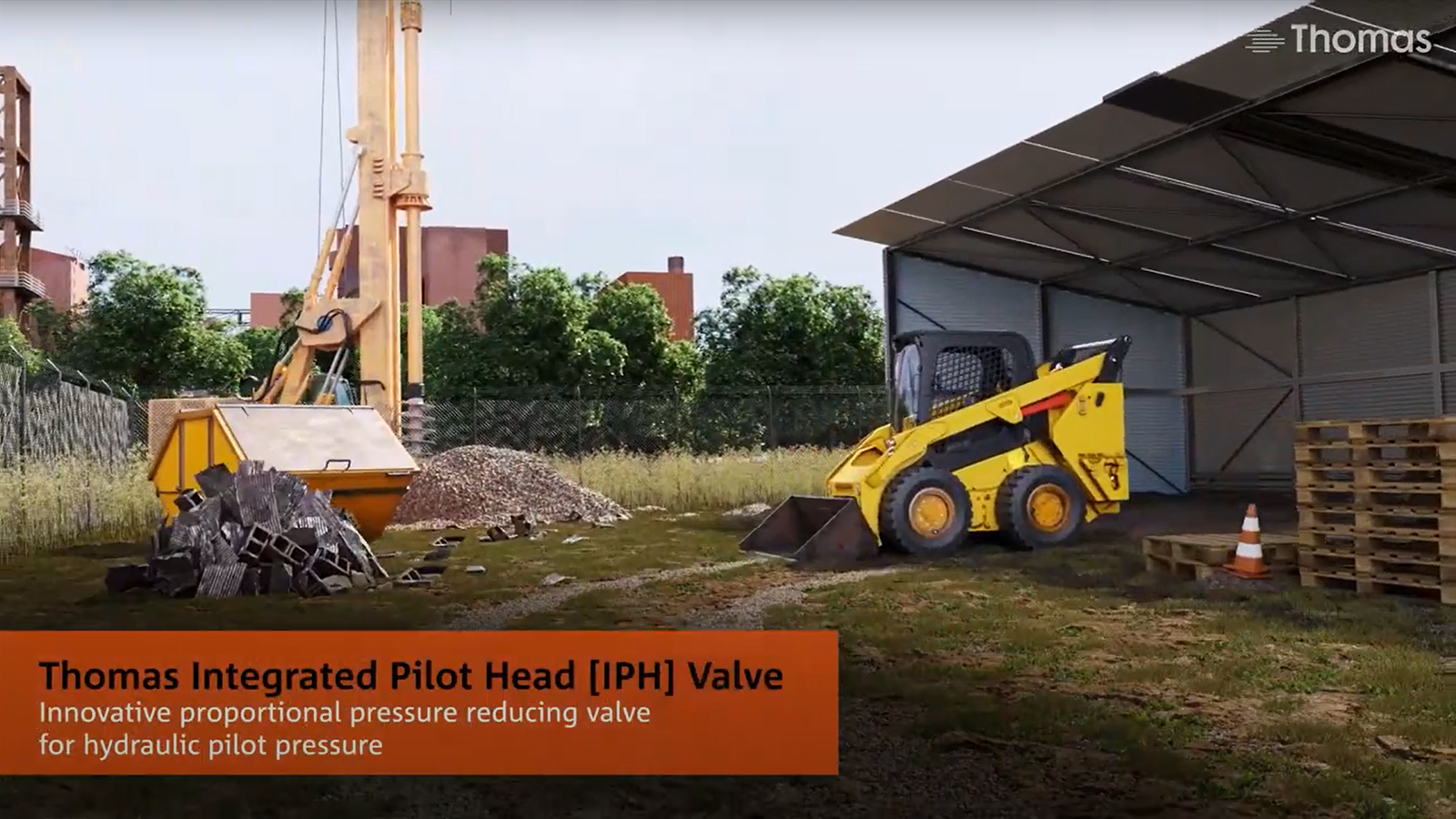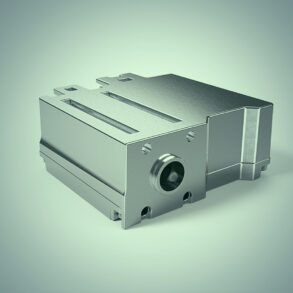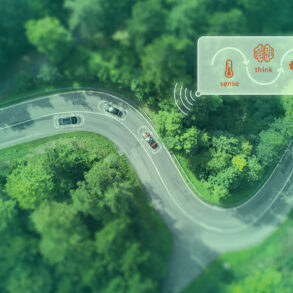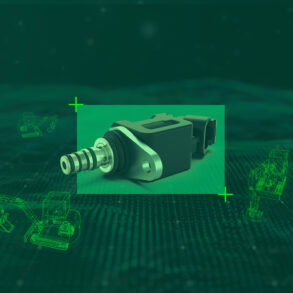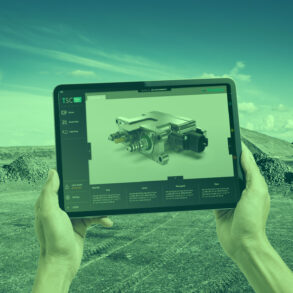Cities are popping up like mushrooms, and many homeowners quite fancy a garage or a proper garden with a pond: demand for construction machinery and vehicles is on the rise. But lot sizes are shrinking – and thus the space available to carry out the necessary work. Small vehicles and machines can meet these requirements, making them much more practical. Picking up on this trend, Thomas has developed the Integrated Pilot Head (IPH), the only one of its kind on the market. Specifically, it is a proportional pressure-reducing valve that enables OEMs to build machinery that is even more compact:
Integrated Pilot Head (IPH) – what’s that?
The Integrated Pilot Head (IPH) is a 3/2 proportional pressure-reducing valve that is fitted inside construction machinery in order to control the flow rate of its main valves precisely and reliably. With its three connectors (labelled “P,” “A,” and “T” for pump, work (“Arbeit”), and tank), the IPH can be connected either to the distributor block via a sealed interface or directly to the main valve. Thomas developed the IPH for a leading German manufacturer of mobile hydraulic systems as a 25-bar version but can offer additional pressure levels at its customers’ request. Compared with other products on the market, the IPH boasts unbeatable technologies and benefits that no other competitor can offer.


